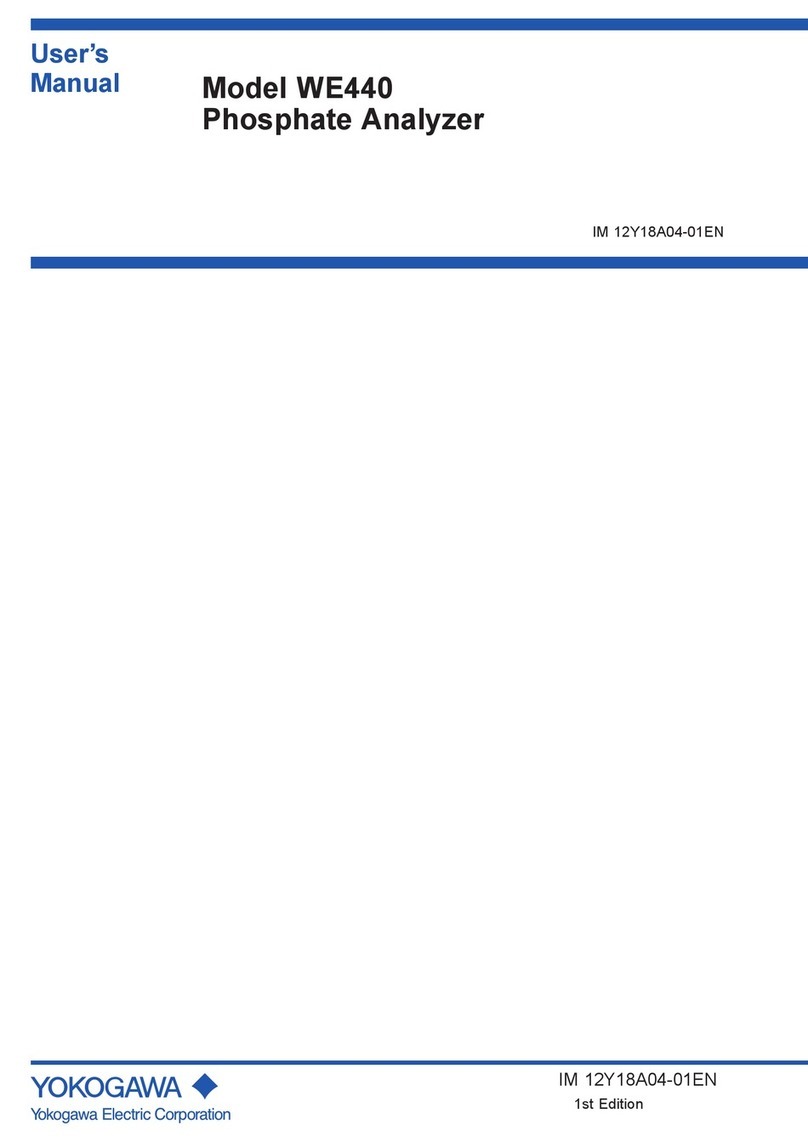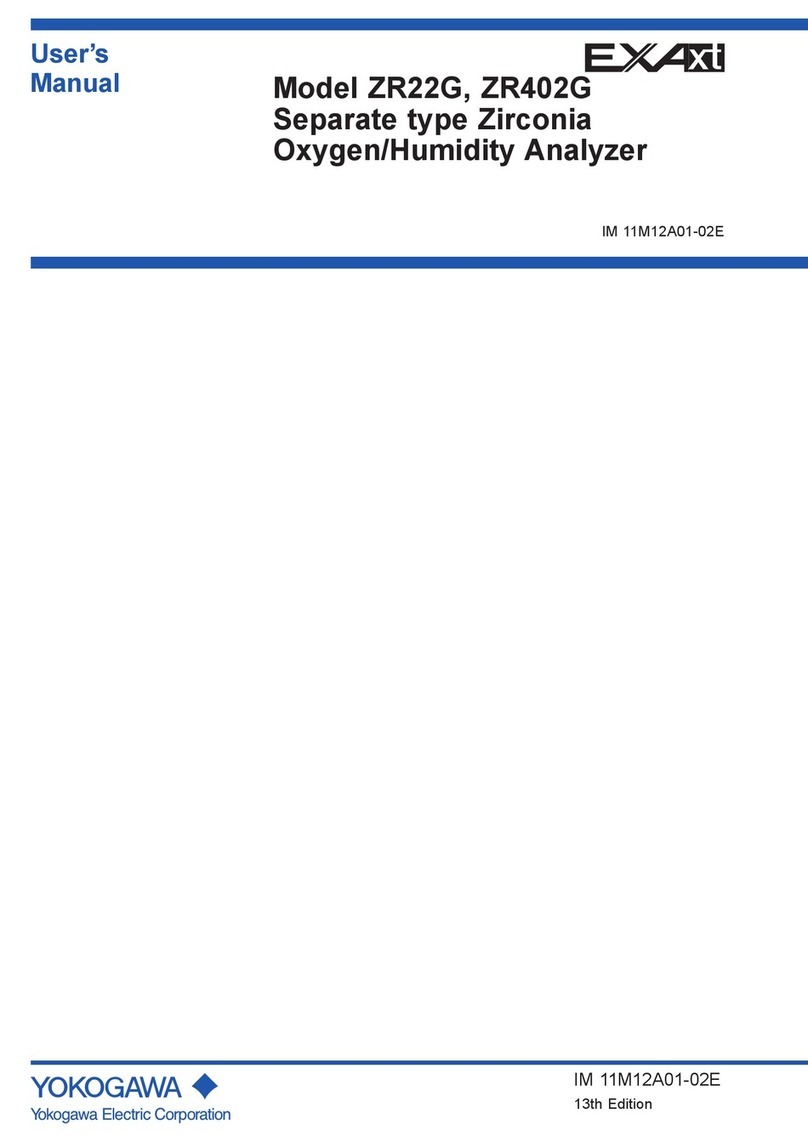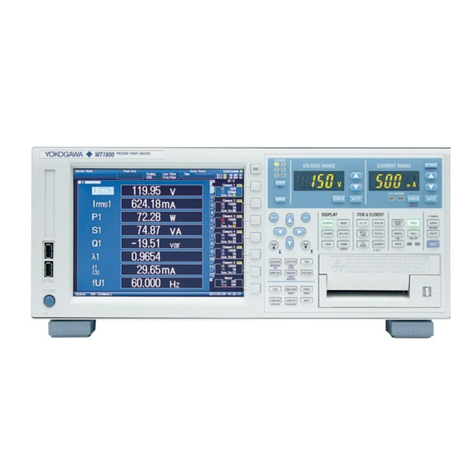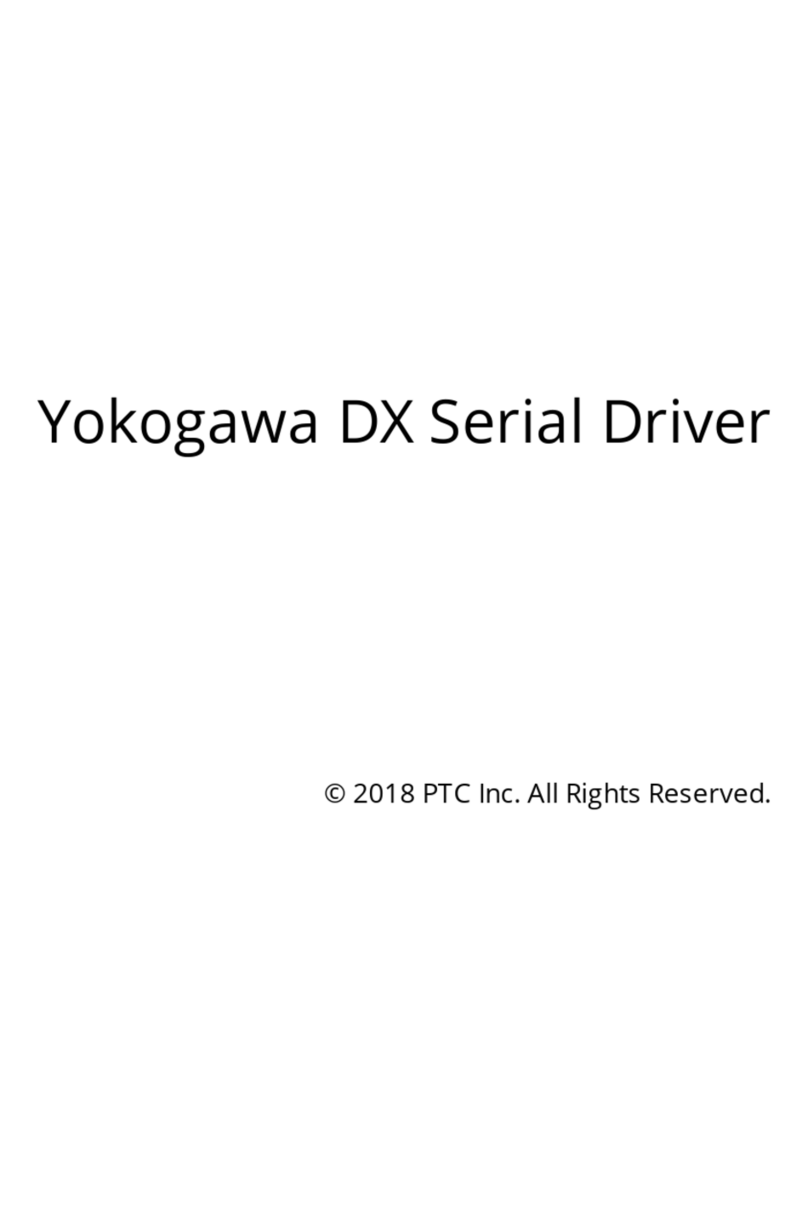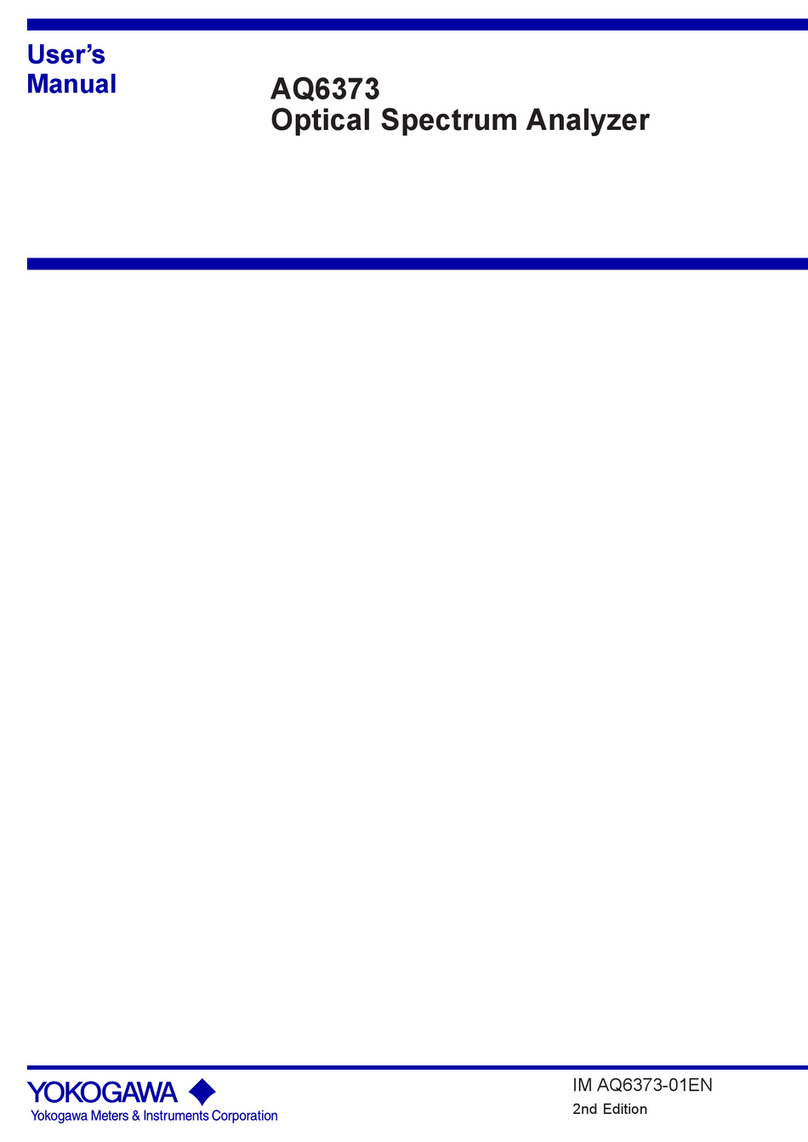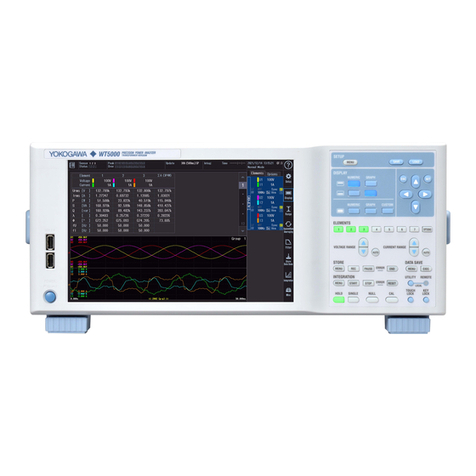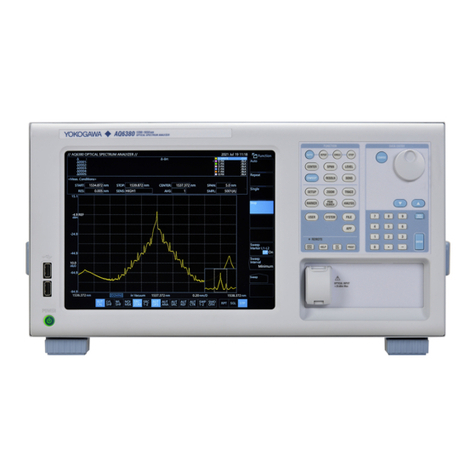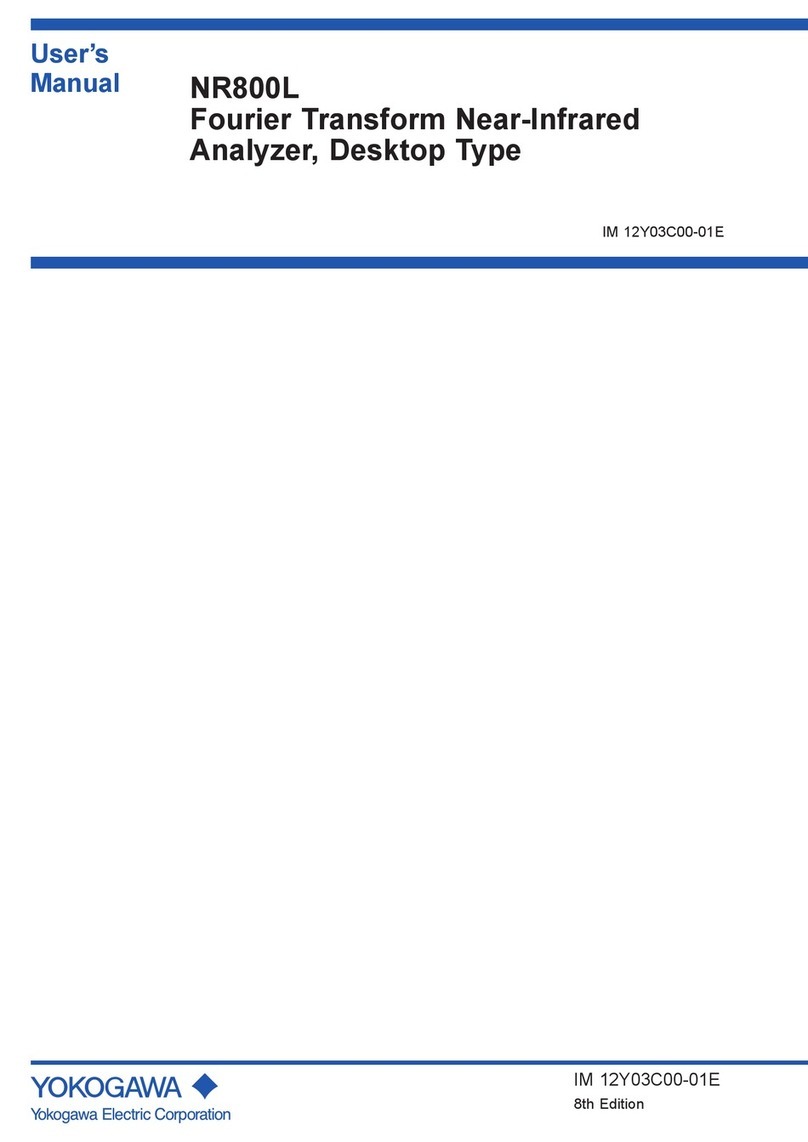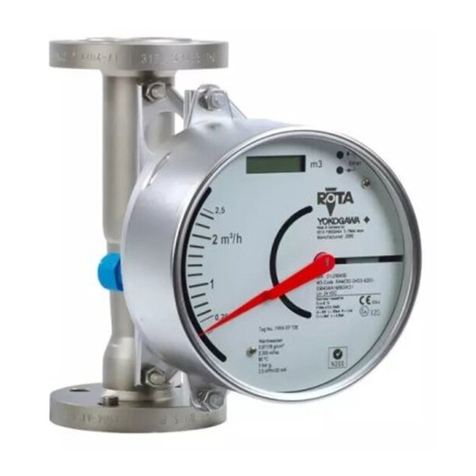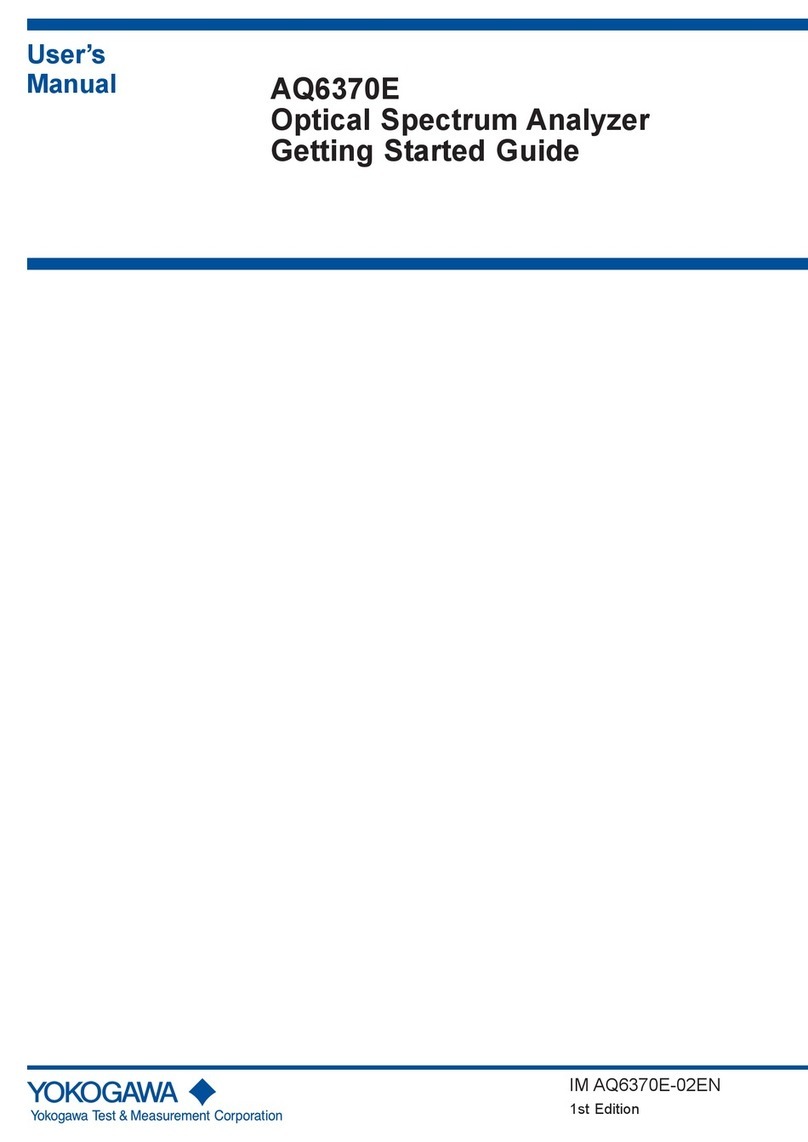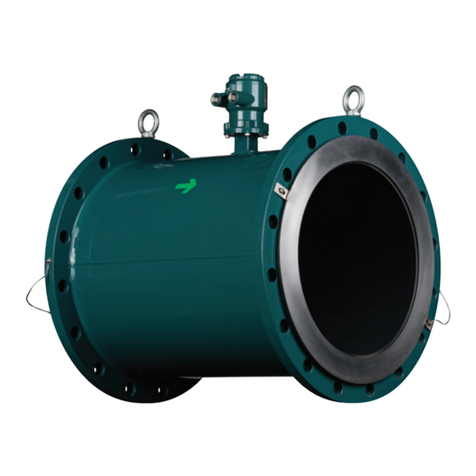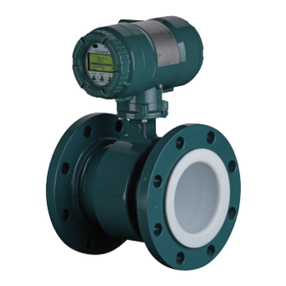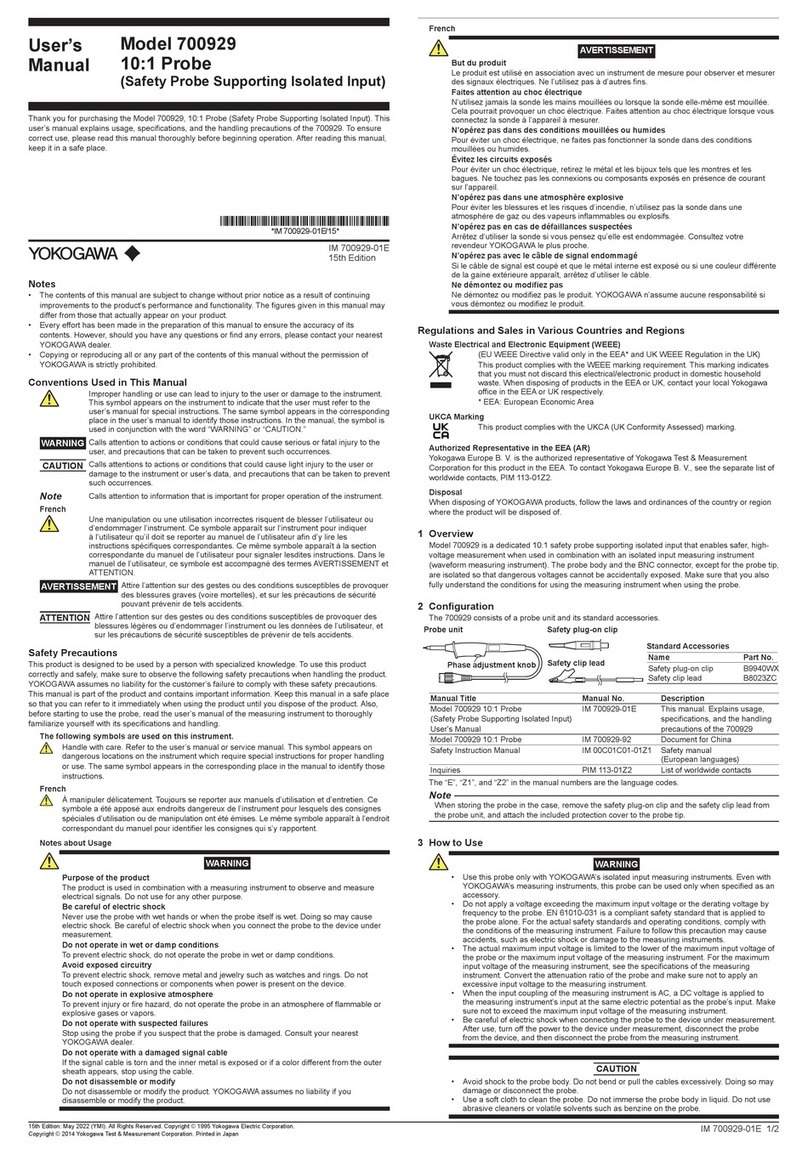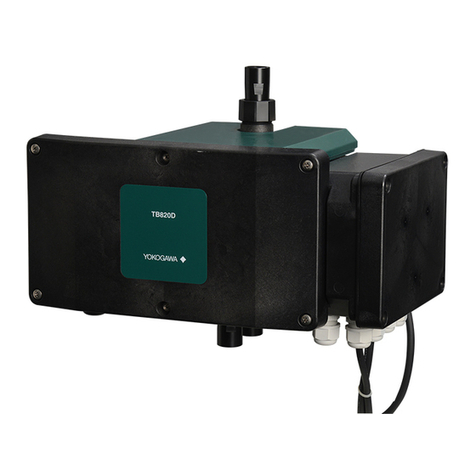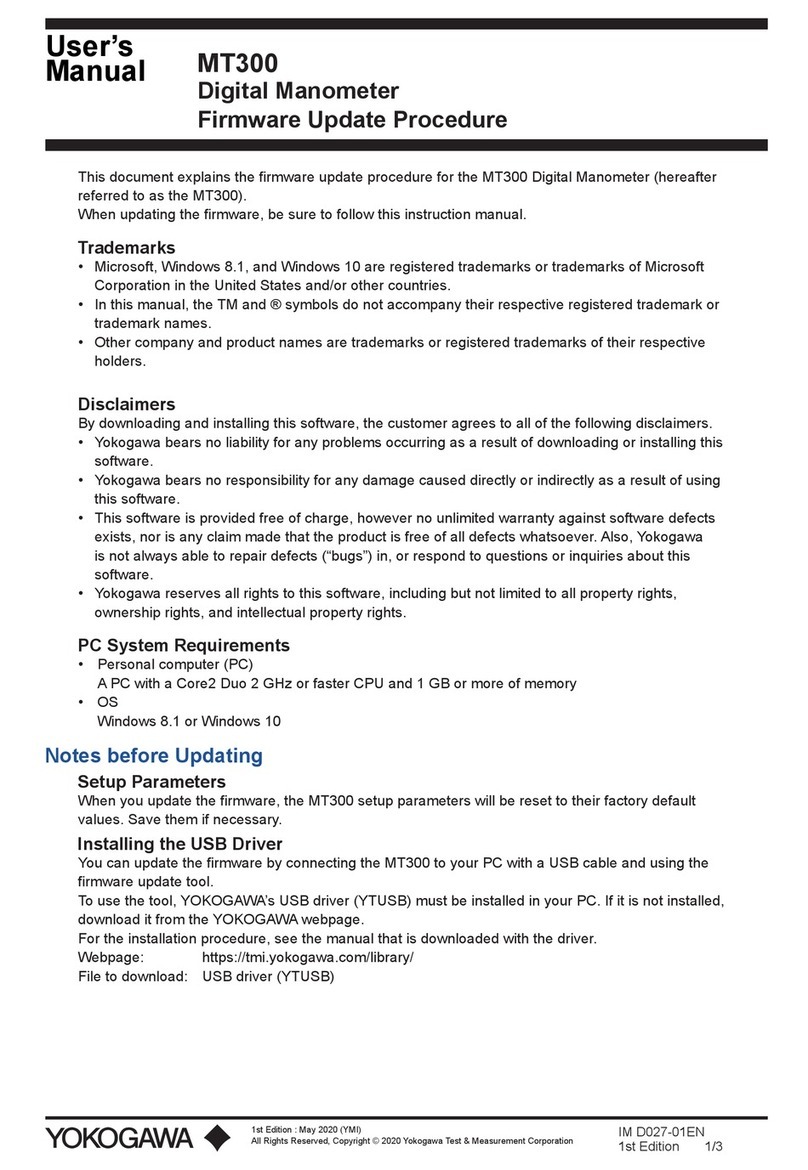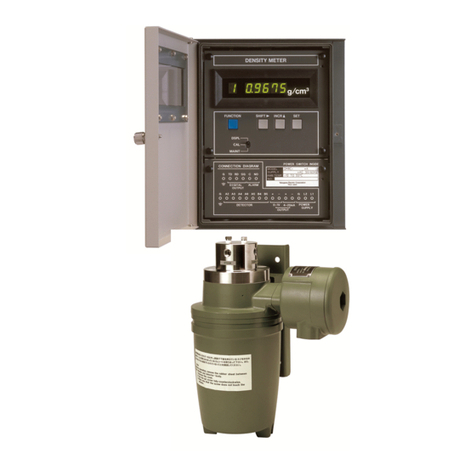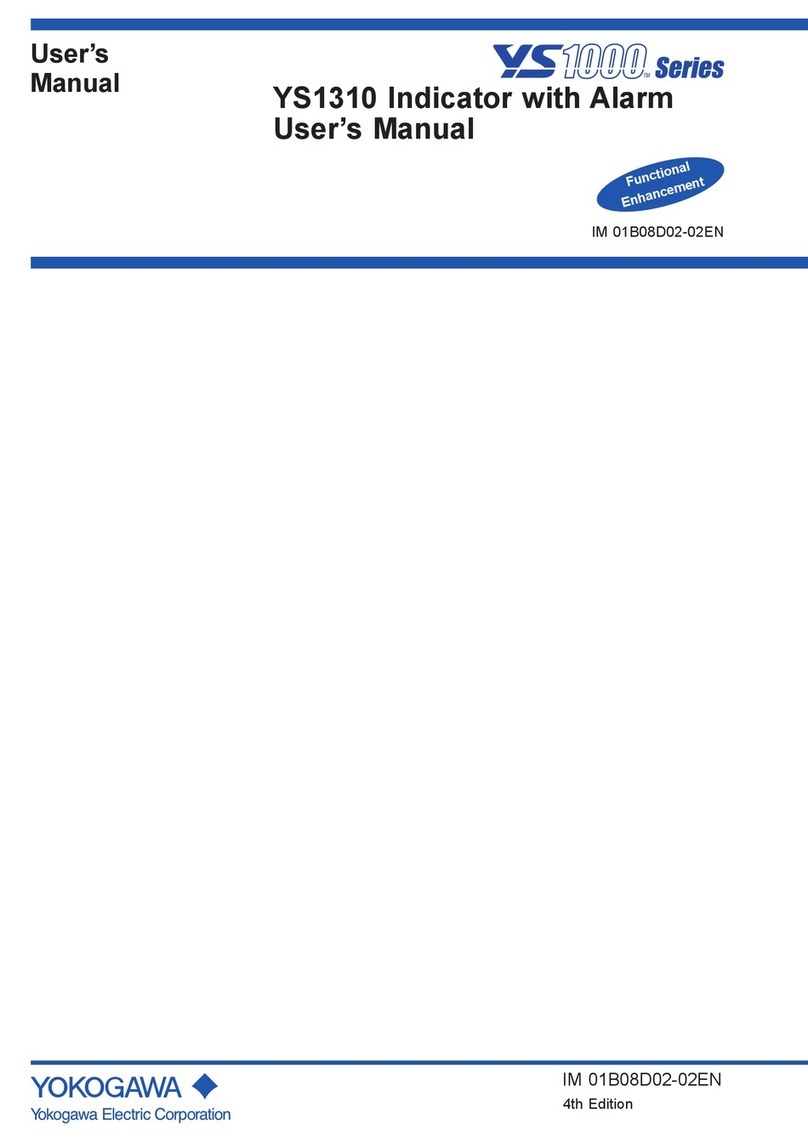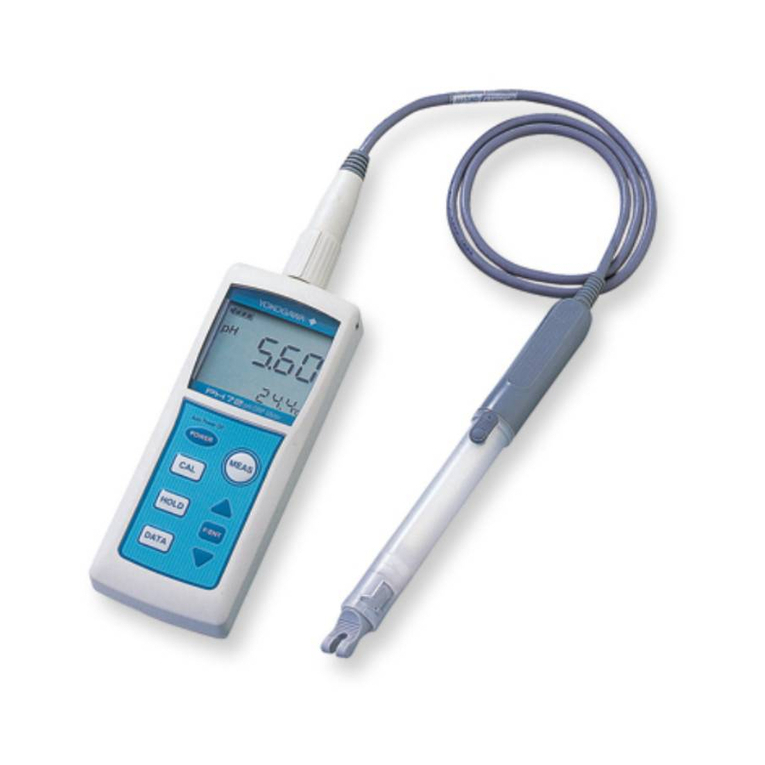
Notes
• The contents of this manual are subject to change without prior notice as a result of continuing
improvements to the instrument’s performance and functions. The figures given in this manual may
differ from those that actually appear on your screen.
• Every effort has been made in the preparation of this manual to ensure the accuracy of its
contents. However, should you have any questions or find any errors, please contact your nearest
YOKOGAWA dealer.
• Copying or reproducing all or any part of the contents of this manual without the permission of
YOKOGAWA is strictly prohibited.
Conventions Used in This Manual
Improper handling or use can lead to injury to the user or damage to the instrument.
This symbol appears on the instrument to indicate that the user must refer to the
user’s manual for special instructions. The same symbol appears in the corresponding
place in the user’s manual to identify those instructions. In the manual, the symbol is
used in conjunction with the word “WARNING” or “CAUTION.”
WARNING Calls attention to actions or conditions that could cause serious or fatal injury to the
user, and precautions that can be taken to prevent such occurrences.
CAUTION Calls attention to actions or conditions that could cause light injury to the user or
damage to the instrument or user’s data, and precautions that can be taken to prevent
such occurrences.
Note Calls attention to information that is important for the proper operation of the
instrument.
Safety Precautions
This product is designed to be used by a person with specialized knowledge. To use this product
correctly and safely, make sure to observe the following safety precautions when handling the product.
YOKOGAWA assumes no liability for the customer’s failure to comply with these safety precautions.
This manual is part of the product and contains important information. Keep this manual in a safe place
so that you can refer to it immediately when using the product until you dispose of the product. Also,
before starting to use the probe, read the oscilloscope manual to thoroughly familiarize yourself with its
specifications and handling.
The following symbols are used on this instrument.
Handle with care. Refer to the user’s manual or service manual. This symbol appears on
dangerous locations on the instrument which require special instructions for proper handling
or use. The same symbol appears in the corresponding place in the manual to identify those
instructions.
Risk of electric shock
Make sure to observe the following safety precautions. Failure to comply with the
precautions could lead to injury or death or damage to the instrument.
WARNING
Purpose of the product
The product is used in combination with an oscilloscope to observe and measure electrical
signals. Do not use for any other purpose.
Grounding of the measuring instrument
The protective grounding terminal of the oscilloscope must be connected to ground.
Check the grounding
Before connecting the probe input terminal to the device under measurement, ensure that
the measuring instrument is grounded properly and that the probe’s BNC connector is
connected to the oscilloscope input.
Observe the maximum input voltage
Do not apply a voltage exceeding the input range specified in the specifications between an
input lead and ground or between two input leads. Also, take the set attenuation ratio into
account.
Be careful of electric shock
Never use the probe with wet hands or when the probe itself is wet. Doing so may cause
electric shock. Be careful of electric shock when you connect the probe to the device under
measurement.
Avoid exposed circuitry
To prevent electric shock, remove metal and jewelry such as watches and rings. Do not
touch exposed connections or components when power is present on the device.
Precautions when connecting and disconnecting the probe
Do not disconnect the probe from the oscilloscope while the probe is connected to the
device under measurement. Doing so may cause electric shock.
Do not operate in wet or damp conditions.
To prevent electric shock, do not operate the probe in wet or damp conditions.
Do not operate in explosive atmosphere
To prevent injury or fire hazard, do not operate the probe in an atmosphere of flammable or
explosive gases or vapors.
Do not operate with suspected failures
Stop using the probe if you suspect that the probe is damaged. Consult your nearest
YOKOGAWA dealer.
Do not operate with a damaged signal cable
If the signal cable is torn and the inner metal is exposed or if a color different from the outer
sheath appears, stop using the cable.
Do not disassemble or modify
Do not disassemble or modify the product. YOKOGAWA assumes no liability if you
disassemble or modify the product.
Thank you for purchasing the Model 701978 Differential Probe. This user’s manual explains usage,
specifications, and the handling precautions of the 701978. To ensure correct use, please read this
manual thoroughly before beginning operation. After reading this manual, keep it in a safe place.
IM 701978-01EN
1st Edition
CAUTION
Application and design of the product
The product has not been designed or manufactured for applications in which high reliability
is required over a long period of time.
Protective structure
The product is not dust or water resistant. Do not use it in areas with a lot of dust or near
water.
Usage and storage environment
Avoid using or storing the product in an environment that does not meet the specifications,
such as direct sunlight, high temperature and humidity, or condensation. Deformation or
insulation deterioration can occur resulting in failure to retain the product specifications.
Handling the probe
Avoid vibration, shock, and static electricity when handling the probe. Do not bend or pull the
cables excessively. Doing so may damage or disconnect the probe.
Operating environmental limitations
The product is a Class A (for industrial environments) product. Operation of the product in
a residential area may cause radio interference in which case the user will be required to
correct the interference.
1. Overview
Model 701978 Differential Probe is a differential input active probe that supports high voltage up to
1.5 kV and high frequency inputs up to 150 MHz. It can be used for oscilloscopes with single-ended
inputs.
2. Configuration and Functions
Offset voltage adjustment screw
Overload indicator
Attenuation switch
(50:1/500:1)
To oscilloscope
1. Probe head
Input lead
To device under measurement
Probe cable
Power cable
2. Probe interface unit
4. Extention lead
(black/red, 1 m)
3. Pincher tip
(black/red)
5. 100-Ω resistor
adapter (yellow)
6. 150-Ω resistor
adapter (green)
7. O-ring (8 colors)
No. Standard Parts Part No. Optional Accessories
(Sold separately)
Part No.
1. Probe head – Long test clip 701906
2. Probe interface unit – Alligator clip (dolphin type) 701954
3. Pincher tip B9852MM(black)/
B9852MN(red)
Fork terminal adapter 758921
Alligator clip (rated 300 V) 758922
4. Extension lead B8099LF(black)/
B8099LG(red)
Alligator clip (rated 1000 V) 758929
Safety terminal adapter 758931
5. 100-Ω resistor adapter (yellow) B8099LJ
6. 150-Ω resistor adapter (green) B8099LK
7. O-ring (8 colors, attached to the
probe cable)
–
8. Manuals (see below) –
Manual Title Manual No. Description
Model 701978 Differential Probe
User’s Manual
IM 701978-01EN This manual. Explains usage, specifications,
and the handling precautions of the 701978.
Model 701978 Differential Probe
Safety Instructions
IM 701978-02FR The warnings and cautions in French to
supplement the IM 701977-01EN
Inquiries PIM 113-01Z2 List of worldwide contacts
The “EN”, “FR”, and “Z2” in the manual numbers are the language codes.
Power Supply
Power is supplied from the probe power terminal on the connected oscilloscope or the power supply
unit (model 701934 or model 700938, sold separately) through the power cable of this cable.
Attenuation Switch
Switches the attenuation ratio between 50:1 and 500:1. When measuring a signal of 150 V or less,
select 50:1 for measurement of higher resolution and less noise. When measuring a signal above
150 V, select 500:1.
Overload Indicator
When the differential input exceeds the following value, the indicator lights.
±150 V at 50:1 attenuation ratio.
±1500 V at 500:1 attenuation ratio.
Offset voltage adjustment screw
This screw adjusts the internal variable resistor. The residual offset voltage can be adjusted using
an appropriate screwdriver.
3. Operating Procedure
WARNING
• Use this probe only with YOKOGAWA’s oscilloscopes. Even with YOKOGAWA’s
oscilloscopes, this probe can be used only when specified as an accessory.
• Do not apply a voltage exceeding the maximum voltage values between the input and
ground. Failure to follow this precaution may cause accidents, such as electric shock or
damage to the instruments.
• To use the probe, first connect to the oscilloscope and then to the device under
measurement. After use, turn off the power to the device under measurement, disconnect
the probe from the device under measurement first, and then disconnect from the
oscilloscope.
CAUTION
• This probe is designed to measure the voltage difference between two points on the
device under measurement. It does not electrically isolate the device under measurement
from the measuring instrument.
• When cleaning the probe, wipe with a piece of soft cloth to prevent damaging the probe.
Do not immerse the probe body in liquid. Do not use abrasive cleaners or volatile solvents
such as benzine on the probe.
Model 701978
Differential Probe
1st Edition : January 2021 (YMI)
All Rights Reserved, Copyright © 2021, Yokogawa Test & Measurement Corporation
Printed in Japan
IM 701978-01EN 1/2
